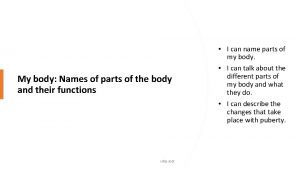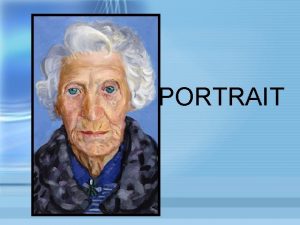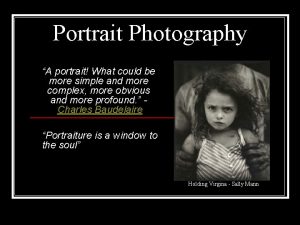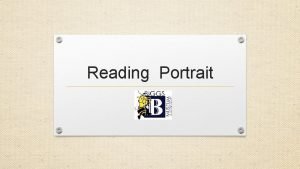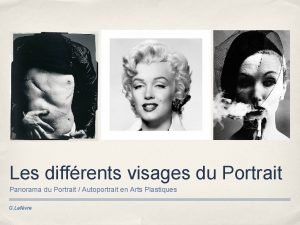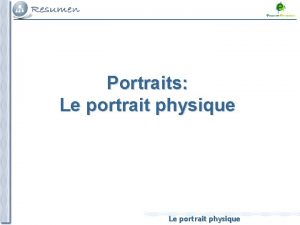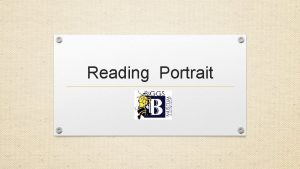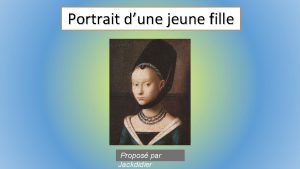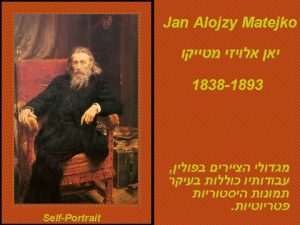Womans World In the 19 th Century Portrait

























- Slides: 25

Woman’s World In the 19 th Century Portrait of Miss Margaret Henderson by John William Waterhouse, 1900

“Victorian” ? ? ?



Keira Knightley in Pirates of the Caribbean

The Corset Camille Clifford

• Corsets, crinolines, hoopskirts exaggerate hips, breasts, waist • Impede movement, breathing • Foster unrealistic image of woman’s body Cutaway view of crinoline, Punch, 1856

Idealization of Woman as Angel/Goddess/Fairy/Mother • Paradox of ideal vs. real • “The Angel in the House” (Coventry Patmore) • “Blessed Damozel” • “Lady of Shalott” (Alfred Lord Tennyson) Emily Patmore, “The Angel in the House” by John Brettx

Goddess The Blessed Damozel by Dante Gabriel Rossetti

Fairy Midsummer’s Eve by Edward Robert Hughes

Angel by Abbot Handerson Thayer, 1889

Mother and Child by Lord Leighton Woman’s highest calling

Influence of Queen Victoria 1819 -1901 Portrait of Queen Victoria Sir Francis Grant, 1843 • Icon of femininie domesticity • Devoted wife to Albert and mother of nine • Retreated to seclusion at Albert’s death in 1861

Impact of Industrial Revolution “Separate Spheres” Social theory enforcing gender polarity Home Work Place

Separate Spheres • Men are rational, independent, competitive, and aggressive • Women are emotional, maternal, domestic, and dependent. • Men leave home to work: “public sphere” (business & politics) • Men have permission for moral laxity • Women rule the home and are confined to it: “private sphere” • Role of helpmeet, domestic manager, moral exemplum • Home is haven from factory, firm, “world” • Plush décor reflects cocooning

Marriage • All wealth owned, inherited, or earned went legally to husband until 1882 • Divorce extremely rare for woman to secure • Inheritance through male line • Until 1891, runaway wife 1850 Wedding Attire could be arrested and imprisoned • Husband could divorce for adultery; wife could not. Victorian wedding attire

Accidental Pregnancy • Birth control literature illegal • Activities heavily chaperoned--unwed pregnancy in upper class rare • Domestic servants often seduced by employer (typically expelled from house) • Infant abandonment/murder common • Unwed mother could sue father in court for child support Richard Redgrave’s The Outcast 1851

Careers 19 th century milliners • Low-paid jobs only • 1851, 43% of British women over 20 had no husband (30% single, 13% widowed) • 90% of these worked

“Upper” Work • Upper” tradeswomen in towns: milliners & dressmakers • “Upper” servants of the wealthy: governesses, skilled cooks, housekeepers, senior parlourmaids, head house-maids and lady's maids

“Lower” Work • Lower working classes: – began work age 8 -12 – Worked until marriage if. . . – All earnings belonged to husband • “Lower” street hawkers: flowers, sweets, seafood, and fortune-telling • Lower servants of middle class: kitchen-maid, scullerymaid, laundress, nursemaid, housemaid • Single “maid-of-all-work”: 14 -16 hours/day

Domestic Servants • Largest category of woman’s work--50% 1880 -1890

No job-No family • • • Charity of wealthy benefactors or church Prostitution Begging Workhouses Suicide Watts’ Found Drowned

The Lady of Shalott by John William Waterhouse


Acknowledgements • Young servant: www. history. powys. org. uk • Wedding gowns: www. victoriana. com • Milliners: www. bbc. co. uk/history/society_culture/welfare/womens_work_02. shtml • Hunt’s “The Awakening Conscience”: www. csun. edu/~jaa 7021/h 498/part 3. htm • Corsets: www. staylace. com/gallery/index. html • Crinoline: www. pemberley. com/janeinfo/victcfsh. html • Camille Clifford: www. staylace. com/gallery • Queen Victoria: www. victorianweb. org • Servants: www. sensibility. com/vintageimages/victorian/ • Leighton Mother: www. victorianartinbritain. co. uk/leighton_mother. htm • Pirates of the Carribean: www. erasofelegance. com • Hughes: www. denison. edu/art/fairy • Waterhouse’s Portrait of Miss Margaret Henderson: http: //. cgfa. sunsite. dk/ • Thayer Angel: www. fineartcompanyltd. co. uk
 Penis diagram unlabelled
Penis diagram unlabelled Late night woman's hour home
Late night woman's hour home Women anatomy
Women anatomy New world of work badges
New world of work badges Hát kết hợp bộ gõ cơ thể
Hát kết hợp bộ gõ cơ thể Frameset trong html5
Frameset trong html5 Bổ thể
Bổ thể Tỉ lệ cơ thể trẻ em
Tỉ lệ cơ thể trẻ em Gấu đi như thế nào
Gấu đi như thế nào Tư thế worm breton
Tư thế worm breton Alleluia hat len nguoi oi
Alleluia hat len nguoi oi Các môn thể thao bắt đầu bằng tiếng đua
Các môn thể thao bắt đầu bằng tiếng đua Thế nào là hệ số cao nhất
Thế nào là hệ số cao nhất Các châu lục và đại dương trên thế giới
Các châu lục và đại dương trên thế giới Công thức tiính động năng
Công thức tiính động năng Trời xanh đây là của chúng ta thể thơ
Trời xanh đây là của chúng ta thể thơ Mật thư anh em như thể tay chân
Mật thư anh em như thể tay chân 101012 bằng
101012 bằng độ dài liên kết
độ dài liên kết Các châu lục và đại dương trên thế giới
Các châu lục và đại dương trên thế giới Thơ thất ngôn tứ tuyệt đường luật
Thơ thất ngôn tứ tuyệt đường luật Quá trình desamine hóa có thể tạo ra
Quá trình desamine hóa có thể tạo ra Một số thể thơ truyền thống
Một số thể thơ truyền thống Bàn tay mà dây bẩn
Bàn tay mà dây bẩn Vẽ hình chiếu vuông góc của vật thể sau
Vẽ hình chiếu vuông góc của vật thể sau Biện pháp chống mỏi cơ
Biện pháp chống mỏi cơ
